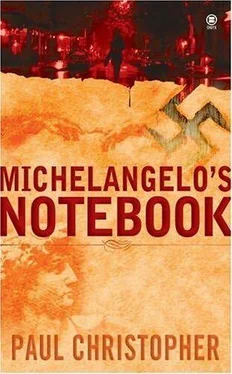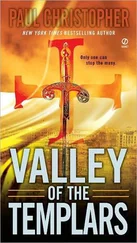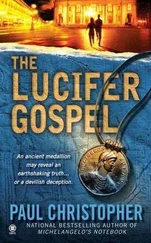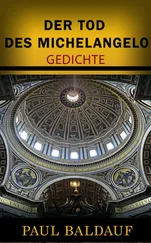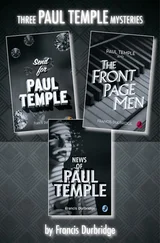Paul Christopher - Michelangelo_s Notebook
Здесь есть возможность читать онлайн «Paul Christopher - Michelangelo_s Notebook» весь текст электронной книги совершенно бесплатно (целиком полную версию без сокращений). В некоторых случаях можно слушать аудио, скачать через торрент в формате fb2 и присутствует краткое содержание. Жанр: Триллер, на английском языке. Описание произведения, (предисловие) а так же отзывы посетителей доступны на портале библиотеки ЛибКат.
- Название:Michelangelo_s Notebook
- Автор:
- Жанр:
- Год:неизвестен
- ISBN:нет данных
- Рейтинг книги:5 / 5. Голосов: 1
-
Избранное:Добавить в избранное
- Отзывы:
-
Ваша оценка:
- 100
- 1
- 2
- 3
- 4
- 5
Michelangelo_s Notebook: краткое содержание, описание и аннотация
Предлагаем к чтению аннотацию, описание, краткое содержание или предисловие (зависит от того, что написал сам автор книги «Michelangelo_s Notebook»). Если вы не нашли необходимую информацию о книге — напишите в комментариях, мы постараемся отыскать её.
Michelangelo_s Notebook — читать онлайн бесплатно полную книгу (весь текст) целиком
Ниже представлен текст книги, разбитый по страницам. Система сохранения места последней прочитанной страницы, позволяет с удобством читать онлайн бесплатно книгу «Michelangelo_s Notebook», без необходимости каждый раз заново искать на чём Вы остановились. Поставьте закладку, и сможете в любой момент перейти на страницу, на которой закончили чтение.
Интервал:
Закладка:
“Anything?” she said to Hugo, knowing what the answer would be.
The receptionist was on the phone. He shook his head briefly.
“Thanks for the bathroom,” Finn whispered gratefully, giving the man a smile. She added a brief wave, then fled. A few minutes later she was on Hudson Street, looking for somewhere to get keys cut.
45
Michael Valentine moved through the stacks of Ex Libris, following his own arcane system of notation that was about as far from the Dewey Decimal System as you could get. He’d been working for most of the morning and part of the afternoon, consulting a dozen different encyclopedias of New York, old insurance plat books, ancient subway blueprints, the church records of half a dozen parishes and a complex sociological treatise on Greenwich Village from the 1930s that listed every single place of business and institution, street by street throughout the entire neighborhood. As Valentine made his way through the gloomy tiers of books and records he began to put together a picture of what the area around 421 Hudson Street had once been.
Originally of course it had been on the very edges of New York in the small rural village of Greenwich on the shores of the Hudson River. By the early 1800s the fields belonging to the Voorhis family had been sold to Trinity Church, who in turn leased the property to the St. Mary Magdalene Benevolent Society. By that time the two-block square of property bounded by Hudson Street, Clarkson, Morton and Varick was already being used as a burial ground for the Episcopal Church of St. Luke’s in the Field a little to the north. In the 1820s a Roman Catholic Church, Holy Redeemer, was built on the property and a stark, redbrick convent and home for “disadvantaged” girls built across Hudson Street. It was at this time that Edgar Allan Poe lived in the area, and his dour, stooped figure was regularly seen plodding through the tombstones of the burial ground. As time went on the burial ground property was subdivided and the first town houses on what was to become St. Luke’s Place were erected, the road being an extension of Le Roy Street to the west and running through to Varick. Holy Redeemer Church burned in 1865 and burials in the area were taken over by St. Paul’s to the south and St. Luke’s to the north. By the 1870s the first elevated trains were appearing, infringing on the property owned by the convent at 421. A fire in 1877 forced the closure of the building and the ruins were demolished in 1881 to make way for the eight-story warehouse building that presently occupied the site. By 1900 there was no trace of the convent, the church or the cemetery. The graveyard was a park, St. Luke’s Place was home to the Mayor of New York and streetcars and horse-drawn trolleys rumbled up and down Hudson Street.
Nothing about the building containing American Mercantile seemed to be special in any way but there had to be a reason Cornwall and his cohorts from the Grange Foundation had chosen it as the storage facility for their shipment. Clearly it had something to do with the foundation’s choice of an office but according to the plat books and Valentine’s ancient, dusty collection of Manhattan reverse directories the foundation hadn’t moved into the old brownstone on St. Luke’s Place until long after the shipment had disappeared.
After carrying a half dozen reference books back to his office, he dropped down into his chair and closed his eyes, trying to see the problem in some kind of rational order. What did Cornwall know about the location that wasn’t immediately obvious to someone browsing through the history books, or more directly through the thousands of volumes and books of records surrounding him now? Irritated by his inability to figure it out for himself, he turned to his computer, booted up the ISPY program Barrie had custom-built for him and punched in Cornwall’s name. A brief biography appeared almost immediately.
Name: Cornwall, James Cosburn
Date of Birth: 1904
Place of Birth: Baltimore, Maryland
Date of Death: 2001
Place of Death: New York, NY
HDescrip: Cornwall was born to Martin and Lois Cornwall, the latter a prominent interior designer and teacher at the Baltimore School of Art. The young Cornwall attended private schools, where he was especially interested in monastic and church architecture. He studied in Europe before college for two years at the Йcole Sebastien in Paris. In 1922 he returned to the United States, attending Yale University the following year. He graduated cum laude from Yale in 1927 and joined the Parker-Hale Museum the same year as an assistant in the department of decorative arts. He was assistant curator 1929-32 before being advanced to associate curator. Beginning in 1930, he worked with Parker-Hale director Joseph Teague (1885-1933) in planning the new medieval extension to the museum. Cornwall was named assistant curator of medieval art in 1934 after Teague’s death. He was named curator of the medieval department the same year. He married Katherine Metcalfe in 1942. In 1943 he joined the army and quickly rose to an appointment as lieutenant in the Monuments, Fine Arts and Archives section of the Seventh United States Army, Western Military District. His chief responsibilities were the discovery and preservation of art treasures hidden by the Nazis. Cornwall was responsible for seizing the looted collections of Goering, Goebbels and Alfred Rosenberg, among others. Returning to the Parker-Hale, he was made director in 1955. In June of 2001 he suffered a fatal heart attack after a particularly contentious board meeting and was succeeded by his protйgй, Alexander Crawley (q.v.).
The biography didn’t tell him very much he didn’t already know but a notation in the bibliography of Cornwall’s published works leapt out at him. A reference to his PhD thesis at Yale: “Giovanni Battista de Rossi and the Catacombs of San Callisto: A Biographical and Architectural Evaluation.”
Using that as a starting point Valentine skittered around through the Internet putting the pieces together. Cornwall’s interest in the subterranean world hadn’t ended with his doctorate. Over the years he’d published a dozen articles on the subject, edited and compiled several scholarly works and had even been an advisor on a series of History Channel programs about crypts, mausoleums, cemeteries and catacombs all over the world. The last program in the series was called “New York Dead.”
Within an hour the pieces had all fallen into place and he had the answer. He searched through the sociological history of Greenwich Village to confirm his theory.
“My God,” he whispered, as the reason for Cornwall’s choice of the Hudson Street warehouse became blindingly clear.
What was now a park where young children played had once hidden the underground crypt of Holy Redeemer Church, connected to the convent on the other side of the road by a “priest’s hole” tunnel so the nuns and “disadvantaged” girls would not be seen in daylight as they made their way to prayer. Cornwall and his fellow conspirators, along with two hundred twenty-seven tons of crates and boxes-six truckloads of looted booty-had vanished under the streets of New York.
And it was still there.
46
The false priest moved through the cluttered rooms of the dank, verminous-looking apartment on Ludlow Street, far below the trendy stores and salons that lined the narrow one-lane thorough-fare above Delancey. As he examined the pitiful rooms, he carried the Beretta at his side. Rooting through the old woman’s apartment in Queens had led him here, but the place was empty. There were only terrible ghosts and memories left behind. The floor was covered with stained and cracked linoleum that might have been blue once. The ceiling sagged in seams and lumps, threatening to split open like overripe fruit. With each step, shining roaches scuttled greasily toward the open baseboards and silverfish fled under the scraps of old carpeting that lay here and there.
Читать дальшеИнтервал:
Закладка:
Похожие книги на «Michelangelo_s Notebook»
Представляем Вашему вниманию похожие книги на «Michelangelo_s Notebook» списком для выбора. Мы отобрали схожую по названию и смыслу литературу в надежде предоставить читателям больше вариантов отыскать новые, интересные, ещё непрочитанные произведения.
Обсуждение, отзывы о книге «Michelangelo_s Notebook» и просто собственные мнения читателей. Оставьте ваши комментарии, напишите, что Вы думаете о произведении, его смысле или главных героях. Укажите что конкретно понравилось, а что нет, и почему Вы так считаете.
